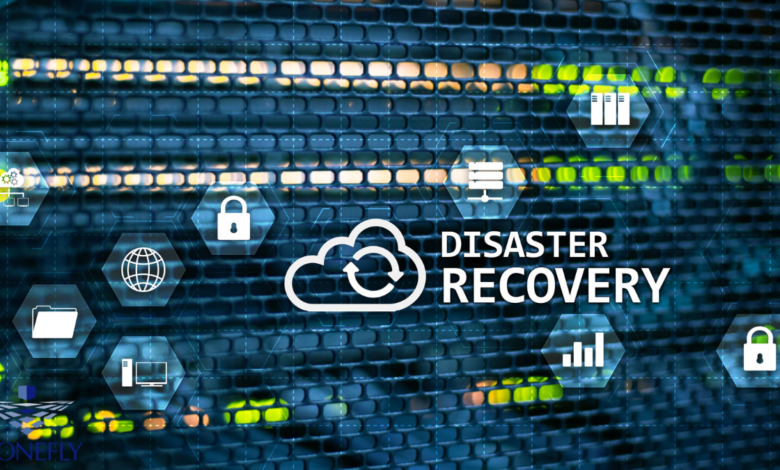What is Cloud Disaster Recovery? 15 Practices to Make Good Implementation?

In today’s business world, it is more important than ever to have a reliable backup and disaster recovery plan in place. Hurricanes, floods, fires and other natural disasters can cause serious damage to your business premises and data. But what is cloud disaster recovery and how can you make sure your implementation is good? In this blog post, we will explore 15 best practices for implementing cloud disaster recovery. Read on to learn more!
What is Cloud DR?
Cloud disaster recovery (cloud DR) is a type of backup and disaster recovery solution that uses cloud computing to protect data and applications from outages. Cloud DR can be used to replicate data to a secondary location in the cloud, which can then be used to restore data and applications if the primary site goes offline.
There are many benefits to using cloud DR, including the ability to reduce Recovery Point Objectives (RPOs) and Recovery Time Objectives (RTOs), as well as the flexibility to scale storage and compute resources on demand.
Also, Read: Using iCloud Unlock to Unlock Your iPhone 14
15 Best Practices for Implementing Cloud Disaster Recovery
1. Define your Business Goals
The first step in any cloud DR implementation is to define your business goals. What are you trying to achieve with cloud DR? What are your RPOs and RTOs? Once you have a clear understanding of your goals, you can begin to select the right solution for your needs.
2. Select the Right Cloud Provider
Not all cloud providers are created equal. When selecting a cloud provider for your DR solution, it is important to consider factors such as cost, SLAs, security, and compliance.
3. Implement a Multi-Cloud Strategy
A multi-cloud strategy is an effective way to reduce the risk of outages and ensure high availability. By spreading your data and applications across multiple cloud providers, you can minimize the impact of any single provider going offline.
4. Use Automation and Orchestration
Automation and orchestration can help to reduce the time and effort required to set up and maintain your cloud DR solution. Automating tasks such as provisioning, backup, and recovery can save you a lot of time and money in the long run.
5. Test, Test, Test
It is essential to regularly test your cloud DR solution to ensure it is working as expected. Testing should be done at least once a year, and more frequently if possible.
6. Monitor Your Solution
Monitoring your cloud DR solution is important to ensure it is running smoothly and to identify any potential issues. Make sure you have the right tools and processes in place to effectively monitor your solution.
7. Review Your Policies and Procedures
Regularly review your DR policies and procedures to ensure they are up to date and align with your business goals. Make sure all stakeholders are aware of your policies and procedures, and that they understand their roles in the event of a disaster.
8. Train Your Employees
Make sure your employees are trained on how to use your cloud DR solution. They should know how to access the data and applications they need in the event of an outage.
9. Keep Your Data Safe
Your data is one of your most valuable assets, so it is important to keep it safe from corruption, loss, or theft. Make sure you have the right security measures in place to protect your data, both in the cloud and on-premises.
10. Consider Data Sovereignty
If you are storing sensitive data in the cloud, you need to consider data sovereignty laws and regulations. Make sure you select a cloud provider that offers the appropriate level of security and compliance for your data.
11. Be Prepared for Outages
No matter how well you plan, outages can still happen. Be prepared for outages by having a plan in place to keep your business running. make sure your employees know what to do in the event of an outage.
12. Communicate with Your Customers
If an outage does occur, make sure you communicate with your customers. Keep them updated on the status of the outage and what you are doing to resolve it.
13. Have a Backup Plan
Even with a cloud DR solution in place, it is still important to have a backup plan. Make sure you have a way to keep your business running in the event of a major outage.
14. Review Your Insurance Coverage
Make sure your insurance coverage is up to date and covers any potential losses from an outage.
15. Stay Up to Date on Technology
The cloud is constantly evolving, so it is important to stay up to date on the latest technology. This will help you to make sure your cloud DR solution is as effective as possible.
Conclusion
We hope this article has given you some food for thought on how to improve your cloud DR strategy. Remember, the key to a successful cloud DR solution is planning, testing, and monitoring. By following these best practices, you can ensure your business is prepared for any disaster.
FAQs
1. What is a cloud DR solution?
A cloud DR solution is a way to keep your data and applications safe in the event of an outage. By spreading your data and applications across multiple cloud providers, you can minimize the impact of any single provider going offline.
2. What are some best practices for setting up a cloud DR solution?
Some best practices for setting up a cloud DR solution include selecting the right cloud providers, automating tasks, testing regularly, and monitoring your solution.
3. How often should I test my cloud DR solution?
You should test your cloud DR solution at least once a year, and more frequently if possible.
4. What should I do if my cloud DR solution fails?
If your cloud DR solution fails, you should have a backup plan in place to keep your business running. Make sure your employees know what to do in the event of an outage.
5. What is data sovereignty?
Data sovereignty is the laws and regulations surrounding the storage of sensitive data. Make sure you select a cloud provider that offers the appropriate level of security and compliance for your data.



